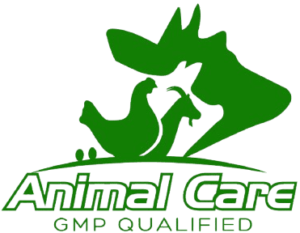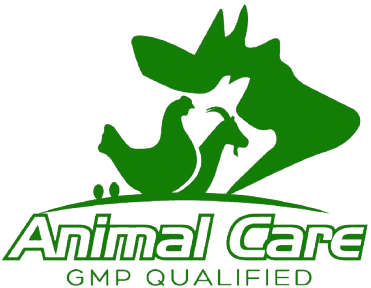Abstract
This guide offers an in-depth overview of the use of 5% Oxytetracycline Injection in treating bacterial infections in livestock. It includes detailed dosage recommendations for various animal species, common symptoms associated with different infections, and essential precautions to ensure safe and effective treatment.
What is Oxytetracycline?
Oxytetracycline is a broad-spectrum antibiotic that effectively treats a wide range of bacterial infections in livestock. It works by inhibiting the growth and spread of bacteria, making it useful for respiratory, skin, and wound infections, among others. By blocking bacterial protein synthesis, oxytetracycline stops bacteria from multiplying, allowing the animal’s immune system to clear the infection.
Suitable Animals and Common Infections
5% Oxytetracycline Injection is widely used across multiple livestock species to treat bacterial infections. Below are the common animals treated with oxytetracycline, the types of infections it targets, and typical symptoms associated with each infection.
1. Cattle
- Common Infections:
- Respiratory diseases: Coughing, difficulty breathing, nasal discharge, fever.
- Foot rot: Lameness, swelling of the foot, foul-smelling discharge.
- Wound infections: Swelling, redness, pus, fever.
- Pinkeye: Watery eyes, swollen eyelids, sensitivity to light.
- Anaplasmosis: High fever, weakness, jaundice.
- Dosage: 1 ml per 10 kg of body weight.
2. Sheep and Goats
- Common Infections:
- Respiratory infections: Nasal discharge, coughing, labored breathing, fever.
- Foot rot: Limping, foot swelling, foul-smelling discharge.
- Metritis: Vaginal discharge, fever, reduced appetite.
- Mastitis: Swollen udder, abnormal milk, reduced milk production.
- Wound infections: Redness, swelling, pus formation.
- Dosage: 1 ml per 10 kg of body weight.
3. Pigs
- Common Infections:
- Respiratory infections: Coughing, fever, nasal discharge, labored breathing.
- Erysipelas: Fever, skin lesions, lameness.
- Leptospirosis: High fever, jaundice, kidney issues.
- Bacterial enteritis: Diarrhea, dehydration, weight loss.
- Dosage: 1 ml per 10 kg of body weight.
4. Horses
- Common Infections:
- Respiratory infections: Coughing, fever, labored breathing.
- Wound infections: Redness, swelling, pain, pus formation.
- Strangles: Fever, swollen lymph nodes, nasal discharge, abscesses.
- Dosage: 1 ml per 10 kg of body weight.
5. Camels
- Common Infections:
- Respiratory diseases: Labored breathing, nasal discharge, fever.
- Wound infections: Redness, swelling, pus at infection site.
- Septicemia: High fever, rapid breathing, collapse.
- Dosage: 1 ml per 10 kg of body weight.
6. Deer
- Common Infections:
- Respiratory infections: Difficulty breathing, coughing, nasal discharge.
- Foot rot: Limping, foul-smelling discharge, foot swelling.
- Bacterial skin infections: Redness, swelling, sores.
- Dosage: 1 ml per 10 kg of body weight.
Dosage by Weight
It is critical to adjust the dosage according to the weight of the animal to ensure effective treatment. Below is a reference table for recommended doses based on the weight of the animal:
| Animal Weight | All Listed Animals |
|---|---|
| 1 kg | 0.1 ml |
| 5 kg | 0.5 ml |
| 10 kg | 1 ml |
| 50 kg | 5 ml |
| 100 kg | 10 ml |
Administration Method
5% Oxytetracycline Injection should be administered intramuscularly (into the muscle). Proper hygiene and sterile equipment should always be used to prevent infection at the injection site.
Precautions
- Avoid Overdosing: Overdosing may result in liver or kidney damage, especially in young or compromised animals.
- Withholding Period: Follow the appropriate withdrawal period before slaughtering animals for human consumption. The typical withdrawal period is 28 days for cattle, sheep, and goats, and 21 days for pigs.
- Lactating Animals: Avoid using in animals producing milk for human consumption unless approved by a veterinarian.
- Veterinary Supervision: Always consult a veterinarian before administering oxytetracycline, especially for animals with pre-existing health conditions or those sensitive to antibiotics.
Conclusion
5% Oxytetracycline Injection is an effective broad-spectrum antibiotic that can treat various bacterial infections in livestock, such as respiratory diseases, foot rot, wound infections, and more. Correct dosing based on animal weight, combined with veterinary advice, ensures safe and efficient treatment. The recommended dosage is for reference only; always consult a veterinarian to adjust the dosage based on specific animal conditions and clinical experience.
For more details on our products and veterinary solutions, please visit Mascot Biological Technology Co., Ltd. at www.sinoanimalhealthy.com.
Note: Always consult with a veterinarian before administering any drug.




